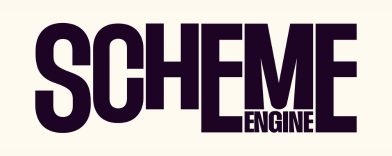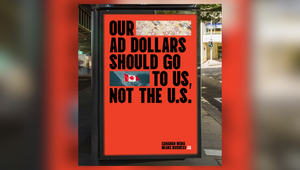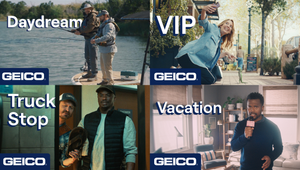
From the Screen to the Lake – How This Gaming Platform Is Helping Teenagers Step Outside

A 2024 study by Pew Research Center found that 85% of US teens play video games as part of their daily life. Therefore, it’s no surprise that brands are consistently trying to capitalise on this market and drive engagement through real life activations, in-game experiences and collaborations with gaming influencers.
Gwoop, however, is an educational gaming platform that’s found ways to authentically connect with teenagers and young people without diluting its overarching ambition and core missions: “creating a safe, healthy gaming space; providing free, web-based games that run on any device, and supporting mental health through engaging, meaningful experiences.”
Its latest game, centred around boating and fishing, was created in collaboration with advertising agency Colle McVoy to support ‘Take Me Fishing’, an arm of the Recreational Boating & Fishing Foundation, that encourages participation in recreational fishing and boating. The game reported over 14 million players in February 2024 alone, and reinforces Gwoop’s commitment to balance by encouraging young people to transfer their digital fishing experiences into the real world.
Proving that authentic digital experiences and educational gameplay can have a real-world, lasting impact. Gwoop’s gaming platform helps to build a “bridge from digital to outdoors,” and emphasises the place that relevant behaviour-based marketing, such as the boating and fishing game, can have within an educational setting.
LBB> In your opinion, what are brands doing wrong when it comes to utilising gaming to get their messaging to teens?
Gavin> Gen z is deeply embedded in gaming—about 90% of them play at least weekly—so brands are smart to tap into this space to reach teens. That said, many are missing the mark in two big ways: authenticity and frequency. On authenticity, gen z values trust and relatability above all. They can spot a paid promotion from a mile away, and if it feels forced—like a brand awkwardly sponsoring a streamer with no real connection—it falls flat. On frequency, brands often treat gaming like traditional ad channels, assuming one-off sponsorships or X amount of impressions are enough. But gaming isn’t static. A virtual billboard in a game might sound cool, but if a player’s sprinting past it to outrun an opponent, it’s just background noise and doesn't even get noticed. Brands need to integrate messaging in ways that feel native to the experience and hit players consistently, not just once.
Obele> Many brands approach teen gamers as an audience they want to go after versus earn. There’s care to be had in engineering elevated versus interruptive experiences for gamers. A choice to present more like a boss villain, lobbing IP and static messages at people—or showing up as a fellow gamer with a playable brand promise and IRL bonus levels.
LBB> Can you tell us more about Gwoop—what is it designed for, how has the platform developed since it first launched, and how does Take Me Fishing fit into its wider offering?
Gavin> Gwoop is an online video game platform designed to turn screen time into healthy brain time. We offer fun, quick games—lasting anywhere from five seconds to five minutes—that boost skills like memory, speed, and focus. Since launching in 2020, we’ve been driven by three core missions: creating a safe, healthy gaming space; providing free, web-based games that run on any device (even older ones, so kids and schools with limited resources can play), and supporting mental health through engaging, meaningful experiences.
Over the years, Gwoop has evolved significantly. We started as a training tool for esports players, focusing on cognitive and physical skills, but we’ve grown into a much broader platform that bridges the gap between kids, parents, and educators. Our games are now used in thousands of schools, and we’ve added features like a mental health check-in tool, which has been a game-changer—schools love it because it works where other apps fall short. It’s all about balance: kids get fun, parents get peace of mind, and educators get a way to connect with students.
That’s where the Boating and Fishing Game fits in. We’re not just about digital play; we want to inspire healthier lifestyles overall. I was drawn to the Recreational Boating & Fishing Foundation’s ‘Take Me Fishing’ arm because it promotes the benefits of getting outdoors and onto the water—something that complements our mission perfectly. We’ve integrated it into our wider offering to encourage kids to step away from screens sometimes and experience real-world activities that boost mental and physical well-being. It’s a natural extension of what Gwoop stands for: fun, growth and balance.
LBB> Take Me Fishing was developed for the Recreational Boating & Fishing Foundation to inspire young people to get outside and onto the water. Can you tell us about the foundations of this project and how/why it came to be?
Gavin> Working with Take Me Fishing came into the picture in a bit of an unexpected way. We were originally hunting for a healthcare sponsor for our Mental Health Check-in feature—something to align with our goal of turning screen time into healthy brain time. We had our sights on a traditional healthcare company, but then Colle McVoy SVP Group account director and sustainability lead, Mike Schwab, reached out. He shared some eye-opening stats: fishing builds grit, boosts confidence, and measurably improves mental health. It was a lightbulb moment for us. Instead of just focusing on digital wellness, we saw an opportunity to bridge the gap between our quick, brain-boosting games and real-world activities that support kids’ mental and physical growth. That’s why we teamed up with Take Me Fishing—it’s not just about gaming. It’s about inspiring a balanced, healthier lifestyle, and their mission fits that vision perfectly.
LBB> Can you tell us more about the anticipated journey as gamers move from a screen to the river?
Gavin> At Gwoop, we’re all about transforming screen time into something healthy and meaningful, so partnering with Take Me Fishing/RBFF to get gamers from their screens to the river is a natural extension of that mission. We see it as a seamless journey: kids start with our quick, brain-boosting games, get curious about real-world activities, and then take that next step outdoors. A study from Dr. Kane at CUNY, published in the Sports Journal, backs this up—87% of gamers said playing sports video games sparked their interest in trying the real thing. That’s the spark we’re aiming to ignite with the Boating and Fishing Game.
The journey itself is pretty exciting. Imagine a kid mastering reaction time and keyboard skills in one of our five-minute games, then seeing a prompt or badge linking to Take Me Fishing’s resources. Suddenly, they’re on the site with their family, finding local fishing spots, watching a quick how-to video on casting, and planning a trip to the river. Take Me Fishing makes it so easy—offering everything from beginner guides to maps of nearby waters—that the leap from digital to physical feels effortless. For us, it’s not just about encouraging active play; it’s about creating a story where gamers become explorers, building confidence and mental resilience both on-screen and off. We anticipate kids starting with curiosity, gaining practical know-how through Take Me Fishing, and ending up with a rod in hand, hooked on the real-world thrill of fishing.
LBB> Gwoop’s educational gaming platform reaches over 14,000 schools and millions of users. How did you identify education as an opportunity to engage with teenagers directly, and how have you managed to capture the somewhat fleeting teenage attention economy?
Gavin> From day one, we saw education as a massive opportunity to engage with teens directly. Schools are where kids spend a huge chunk of their time. Outside of school, they are often surrounded by distractions—social media, phones, sports, you name it. We realized that if we could create fast, fun games that fit into the classroom and sharpened skills like focus and memory, we’d have a way to cut through the noise. Teens already love gaming—90% of gen z plays weekly—so we built Gwoop as a web-based platform that works on any device, even old school computers, making it a no-brainer for educators to adopt.
Capturing the teenage attention economy is tricky—they’ve got the attention span of a goldfish sometimes—but we’ve cracked it by keeping things short, engaging, and purposeful. Our games range from five seconds to five minutes, so they’re bite-sized enough to hook kids without overwhelming them. Plus, we tie them to real benefits—better reflexes, sharper minds—which resonate with teens who want to level up in life, not just on-screen. The mental health check-in feature has been a sleeper hit, too; it’s quick, relatable, and gives them something other apps don’t.
As for partnerships, it's a no brainer for brands because we have their undivided attention, but it actually wasn't part of our original business model because we didn't want to jeopardize any relationships with the school system. So that being said, we are highly selective. We only work with brands that protect user privacy and align with our mission—Take Me Fishing is a perfect example. That trust keeps teens and schools coming back, and it’s how we’ve grown to millions of users while staying true to our roots.

LBB> And how has the Boating and Fishing Game been received in schools, can you share any anecdotes or feedback that you’ve received?
Gavin> The Boating and Fishing Game has been a hit in schools—we’ve gotten some really enthusiastic feedback from educators and students alike. One story that sticks out is from a veteran teacher with 40 years in the classroom. She told us how, back in the day, kids in her town would spend weekends fishing at the local stream instead of glued to games like ‘Call of Duty’. She was thrilled to see that spark coming back—after introducing the game through Gwoop, she overheard kids buzzing about it in class, asking their parents to take them fishing. For her, it was like watching history come full circle, but with a modern twist.
Beyond that, we’ve heard from other teachers and parents that it’s been a game-changer for engagement. One said it’s the first time she’s seen students so eager to talk about something outside their screens that wasn’t forced on them. Another mentioned how the resources from Take Me Fishing, like the local fishing spot finder, made it practical for families to follow through, which kept the excitement alive beyond just a one-off conversation. The feedback’s been overwhelmingly positive—it’s not just about getting kids interested; it’s about giving them a real shot at trying it, and schools are loving that bridge from digital to outdoors.
LBB> Can you tell us about the foundations of this project and how/why it came to be
Obele> We’ve heard from countless women and young girls about the barriers that have kept them from fishing—one of the most striking being the feeling of getting ‘aged out’. Invitations to fish with a caregiver suddenly stop, and with them, a connection to the sport fades. This insight inspired us to create an animated film that captures the experience of drifting away from and eventually returning to fishing across generations.
By the time we discovered Gwoop, our film was nearly complete. But Gwoop’s Mental Health Check-In feature gave it a new dimension, transforming it into more than just a story—it became a catalyst for conversation. Now, the film serves as a touchpoint for discussions about fishing, not just with caregivers but also with teachers and peers, reframing the activity as something more accessible and enduring.
LBB> Looking at the role of behaviour-based marketing when trying to engage a teenage audience, how and why are schools the right place to capture this audience?
Obele> In today’s fast-paced, fragmented world, moments of focus and reflection are rare. Schools provide a unique space where behavior-based marketing can thrive—where students can engage deeply with a brand, explore its role in their lives, and even reconsider their own influence on how others connect with it. At the intersection of curiosity and personalization, meaningful relationships are built.
With this latest initiative, we embraced Gwoop’s platform from the outset, integrating what we know teens love about gaming—mastering mechanics, exploration, and leveling up—while infusing it with the real-world excitement of fishing. The result is an experience that meets young people where they are, reintroducing them to a sport that may have once felt out of reach.
LBB> Can you expand upon the importance of balancing brand presence between tech upstarts and mainstays when it comes to media strategies? And its significance in this case?
Obele> There’s a false binary around size and sophistication. Just because a tech provider is a startup does not mean they are not the best to solve the challenge. In media strategies, balancing between upstarts and mainstays is about ensuring agility and innovation while maintaining reliability and scale. Startups often bring cutting-edge solutions, fresh thinking and a willingness to customize. Established players offer proven performance and stability.
In this case, leaning into the strengths of an upstart could mean unlocking a competitive advantage that traditional partners may not be able to match. The key is evaluating capability over tenure to drive the best outcomes. Upstarts like Gwoop bring bespoke measurement capabilities to the forefront that are simply not achievable in integrations plopping brands into one game within a library of 80 million.















